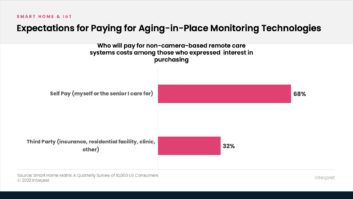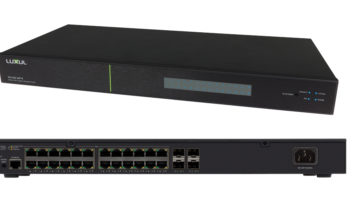RECOGNIZING ENERGY MANAGEMENT OPPORTUNITIES FOR OUR CLIENTS
As revenues in the residential systems industry decline due to the slowdown in home building and cautious consumer spending, smart electronic systems contractors are looking for ways to expand their reach. Many are targeting new markets or offering additional services to maintain staffing levels, keep cash flowing, and quite frankly just survive.
Innovative systems contractors have figured out that there is an industry out there that is not too far removed from our unique niche, and one that is growing at an annual rate of nearly 40 percent. They realize that jumping on this bandwagon might be a ticket to short-term survivability…and long-term prosperity. The

Integrators can help reduce client energy consumption through touchpanel programming like this Jetson Systems design that monitors and controls electric, solar, water, and gas usage. industry? Alternative (or renewable) energy.
Buoyed by the fear of global warming, rising energy costs, and generous government subsidies, this industry is virtually guaranteed to be in a growth mode for years, if not decades, to come. Northern California’s Silicon Valley has been the epicenter of many technology revolutions, beginning with the silicon wafer, from which the valley gets its name. Northern California was, and continues to be, the home of Internet giants (Google, Yahoo!, eBay, Amazon, and more), stem-cell research and nanotechnology. What you may not know is that Northern California is also a leader and trendsetter when it comes to alternative energy.
Thus, from my perch in the heart of Northern California, I bring you the first in a series of articles discussing the opportunities for electronic systems contractors, and methods by which we can play in the high-growth sector of renewable energy and energy management. As we migrate from the industrial age through the information age and into the age of sustainability, electronic systems contractors who have historically provided a profit-motivated service to the nation’s upper crust now have the opportunity to work toward the greater good…the greening of America.
THE DEMAND SIDE
Energy management, like most things, involves supply and demand. The supply side is supported by alternative and sustainable energy sources such as photovoltaic (PV), solar thermal, geothermal, biofuels, fuel cells, and wind. On the demand side, the only way homeowners have historically been able to address energy conservation is through improving the insulation properties of the home, buying Energy Star appliances and programmable thermostats, and manually dimming or turning off lights and other energy-consuming appliances to conserve energy. From the perspective of an electronic systems contractor, gearing up to provide and install alternative energy solutions such as PV, fuel cells, and wind turbines takes time, expertise, new suppliers, and an additional contractor’s license in many states. The practical, logical, and most cost effective place for our industry to start is with demand-side energy management.
WHAT WE CAN DO
If you think about it, those of us who are involved in systems integration already have a sensor and control network running throughout our clients’ homes. It is not a far stretch to conclude that through the thoughtful addition of some sunlight and occupancy sensors, and some additional logic programmed into your AMX or Crestron systems, you can reduce your clients’ energy usage. This may involve programming by turns off lights, music, and TVs in rooms not in use, adjusts heating and cooling set points in unoccupied areas of the home, opens and closes motorized shades to allow

Randy Stearns (randys@ engenv.com) is president of Alameda, California-based Engineered Environments. or prevent solar gain (depending on the season), turns off pool pumps and water features during periods of peak usage, and more.
There are many other things that we can do as systems contractors to make money by helping our clients conserve energy. A fairly exhaustive list of revenue-generating energy conservation ideas will be addressed in my March article.
In the meantime, I’d like to provide some industry resources that will enable some self-directed research into the world of alternative/renewable energy and energy management. Please click on these helpful websites for alternative energy-related organizations and trade associations, alternative energy subsidies, tax credits and rebate programs, and green-focused industry publications:
Alternative Energy Related Organizations and Trade Associations
Green Building – U.S. Green Building Council (USGBC) (www.usgbc.org)
Solar – Solar Energy Industries Association (SEIA) (www.seia.org)
Solar Electric Power Association (SEPA) (www.solarelectricpower.org)
Wind Energy – American Wind Energy Assoc. (www.awea.org)
Geothermal – Geothermal Energy Assoc. (www.geo-energy.org)
Fuel Cell – U.S. Fuel Cell Council (www.usfcc.com)
Hydropower – National Hydro Power Assoc. (www.hydro.org)
Alternative Energy Subsidies, Tax Credits and Rebate Programs
Federal – Energy Star (www.energystar.gov)
U.S. Dept. of Energy (www.energy.gov/taxbreaks.htm)
State and Local – Database of state and local incentives (www.dsireusa.org)
Industry Publications
Home Power Magazine (www.homepower.com)
Solar Today (www.solartoday.org)
Solar Industry Magazine (www.solarindustrymag.com)
PV Magazine (www.pv-magazine.com)
PV News (www.greentechmedia.com; www.prometheus.org)
North American Clean Energy (www.nacleanenergy.com)
Ener G (www.altenerg.com)
Wind Power Monthly (www.windpower-monthly.com)
North American Windpower (www.nawindpower.com)







